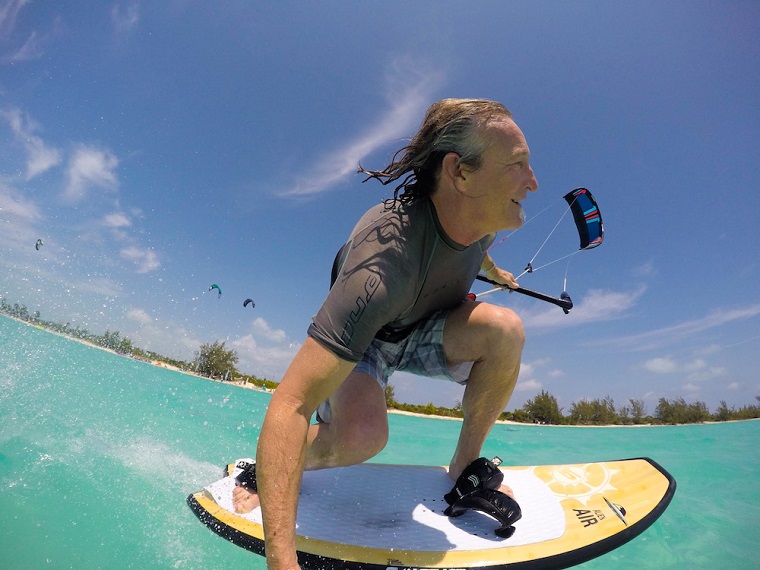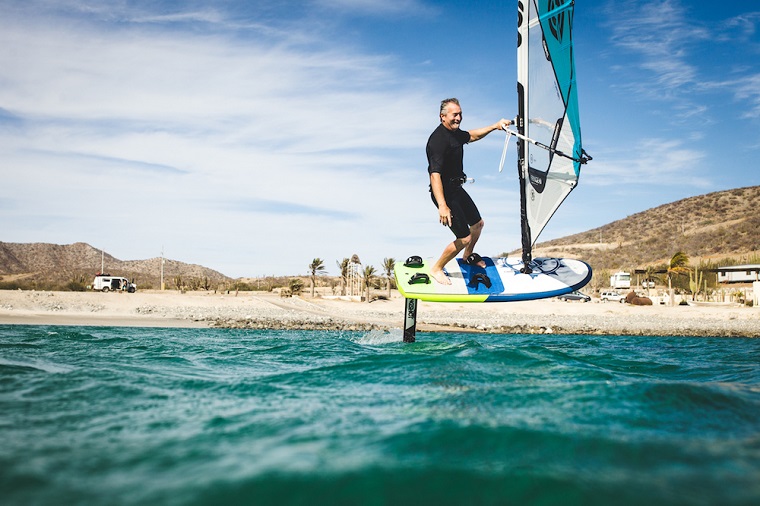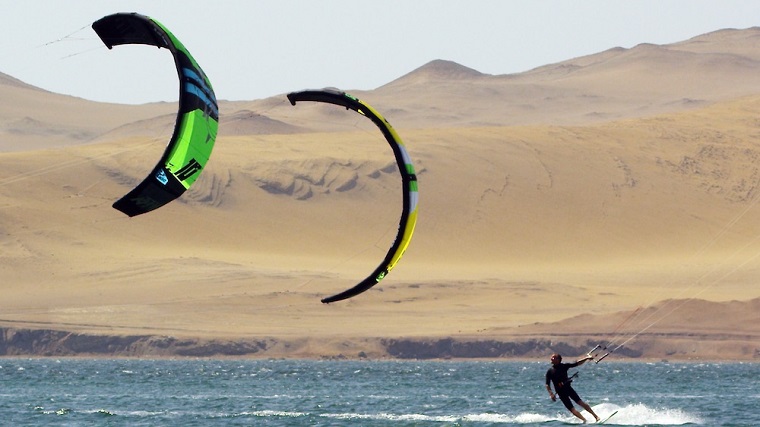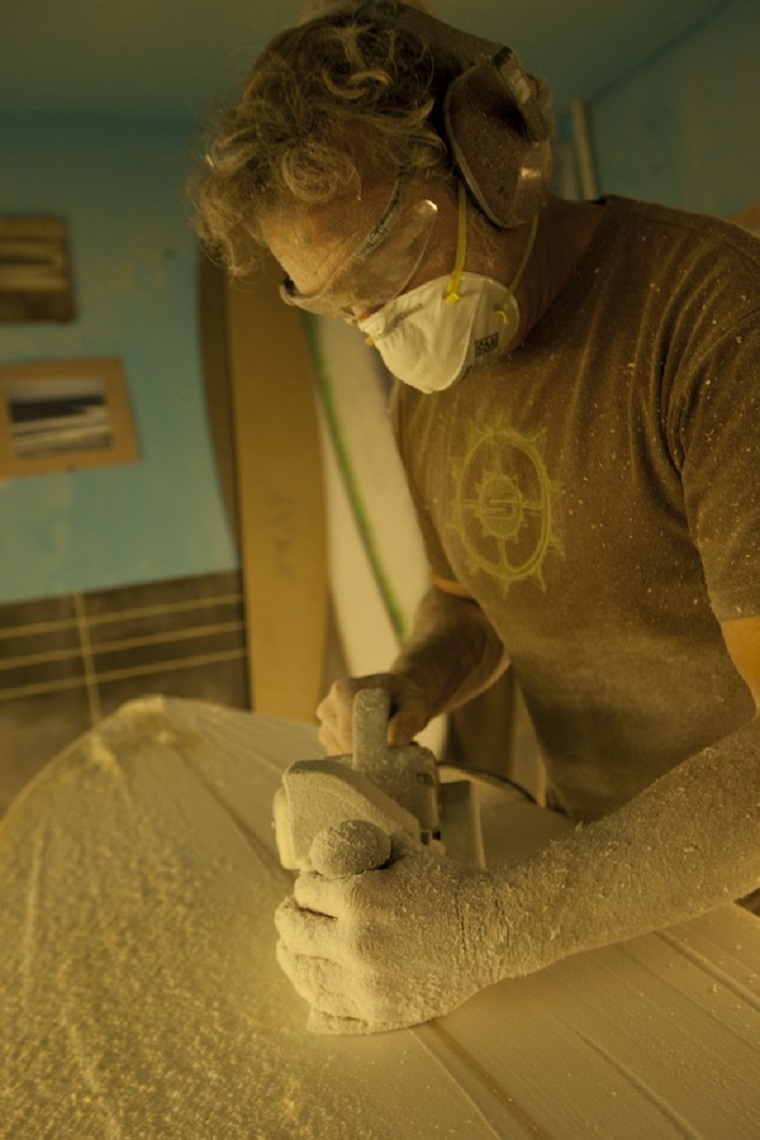Tucker Talks Foils with Slingshot's Tony Logosz
Tucker Talks Foils with Slingshot's Tony Logosz
When was Slingshot founded?
Slingshot was originally founded in 1999. Started in ‘95 and officially launched in ’99.
So going on 18 years-ish. Wow, that is basically the entire lifespan of kiteboarding. When did you start to see Hydrofoil's becoming part of the sports Slingshot represents? When did you start designing your own products for that purpose?
We were influenced by the original kite-skiing that started here in the Columbia Gorge area. Hydrofoiling has been around quite a long time and I dabbled at development for quite some time before taking it seriously. The Europeans were always pushing the sport as an underground thing.
I met Nic Leeson from Lift, the company, and he brought me back to being interested in building foils. In 2000, I designed the first Slingshot foil.
What a great collab. Nic was at the forefront of the design back then and you guys had the infrastructure to bring it to the masses at a great price. How have the designs evolved from those first designs? Has your intention for the designs changed?
The designs now have 5 sport categories for Slingshot. Behind the boat, kite, windsurf,surf, and SUP. Each wing system demands its own requirement based on the conditions. There is a quite a bit of overlap with the modular wings so some wings can crossover between sports.
First came control and stability as primary features in the foil wings, now we are evolving toward speed ranges and turning. I am always refining.
We at Slingshot are the first company to present all five sports to foil.

Photo credit: Slingshot Kiteboarding (c) http://www.slingshotsports.com/
As a person who participates in all of those at some point, that seems to be a great selling point. What have you learned or developed as a result of being involved in all those sports rather than just kiting?
We are striving for a mix and match between sports. Each modular wing has a design for a certain result, speed, turning, etc. For example, you can take a high lift wing (H4) and put it behind a boat and wake or ride it in the surf.
The more you know, the more dangerous it is for development and innovation. It is a non-stop process that is changing every day
We have certainly learned that the H2 or FSurf wings work amazingly behind a small kite. Having all those options and the ability to do some guinea-pigging really opens your eyes to all the possibility. We have seen a huge trend toward larger wings for kiting. It seems like no one cares about speed anymore, they just want that easy lift and flow that those wings provide. As a result, we are selling way more 4-7m kites than ever before.
The H2 provides stability based on its shape while the H4 is more agile in kiting within the appropriate speed range. A smaller wing is much faster for sure. A larger wing allows a kiter to be more comfortable with less energy output. Slingshot designed the SST kite for foiling as it can be used in lighter winds and has great lift. It allows a “surf feel”. Here in the Gorge we get swells and it makes for a fun day.
We now carry most major foil brands and you guys have great success even in that competitive lineup. What do you think gives your products that edge?
We believe our modular platform will continue placing us in the lead as it gives our customers choices. Bigger selections and all 5 sports. We are working on dialing in our marketing communications for each wing so that everyone has the correct knowledge on how each wing performs. We have the aluminum Flight School, which is a 3-mast package and is very helpful when learning to foil. After a kiter progresses we offer the Ghost Whisper Carbon.
We are up to 15 wings including prototypes and have only launched 5. Lots of testing going on here!

Photo credit: Slingshot Kiteboarding (c) http://www.slingshotsports.com/
That is great to hear. Even with all the options here, it seems like there is a lot of room for options for different riders, conditions, feel, etc...Almost like surf shapes, every condition and rider has a perfect setup. All that in an affordable, modular, durable package is quite the achievement. As riders, we really appreciate that. Any hints on what is coming down the pipe in the next couple years?
Next spring we will launch at least 5 new wings and that doesn’t even include carbon yet. We are building on the concept of flavors. You will want different sizes based on your riding styles and speeds. We have figured out speeds for the wings [and] now we are working on matching them with body weights. We watch the trends and are working on being the best quality with our development and testing not necessarily the first. Covering all 5 sports is our goal and we DO strive to be the first company to continue in that vein.
We are stoked to hear that. You are also one of the first large operations to provide boards for SUP and Surf foiling. How did that come about? What is the idea behind those designs? How do they differ from the board sitting in your normal surfer's garage?
Slingshot offers the Skywalker and AirStrike but you can foil on any surfboard. We have a new Shaper’s program to help local shapers retrofit boards with our foils. The downside is that normal surfboards have curvier rockers so it is necessary to balance them with the Tuttle box. Our board developers focused on thicker tails and concave decks so you can catch waves that were normally not catchable. The block tail on our two boards help push you into those smaller waves. The goal was to have a board that you could paddle and get up quickly. You can ride the smallest bumps and make flatter days still epic.
Mission accomplished. We get all excited about those knee high days. It’s great to get long rides on those mellow days. I am glad you mentioned the new program with local shapers. It seems like there is a lack of foil specific boards out there currently. What advice would you give a new foiler on what type of board to have shaped or what board to choose out of their current quiver? Also, for the shapers and glassers, what kind of glassers schedule do you recommend over your Ride Engine Track box?
Take off speed is key. You need to ask yourself, and be honest of your paddle ability. What board would you normally use to be able to get to your feet and catch a 5 ft. wave? The key is getting to your feet. Would that be a Fish or a wide tail board? You will want to be able to get at least one pump in. Most shorter boards allow more pumping ability.
There should be 3 layers of 6 oz. fiberglass or carbon over the track box. The staggered layers should run 12-18 inches in front of the box. That seems to be what is working. If you are a bigger rider you may want more reinforcement. You may need to add some layers to the top as well for balance and so you will have a symmetrical top and bottom.
With the size of the HD foam brick that should connect with the deck on most boards. If you have a thick SUP style board, does that HD foam need to make contact with the deck lamination?
Yes, it does. High density block material will need to be used on SUP’s to add on top of your deck. It needs to fit the thickness of the tail.
Good knowledge. Hopefully that info will result in fewer "shipwrecked" foils on the ocean floor. What shapers are currently involved in the program?
At Slingshot we steer on the overbuilt side for our SUP’s. We want long term life but it is a fine line between that and being a lighter board. We have a large group down in Australia and starting in South Africa. In the US, we have Pat Roselin [and] Mark Richards. Coleman Buckley, the founder of Ride Engine, is currently working on that program and has a good list.
You mentioned overbuilt with regard to your boards. I think the same could be said for most of your products, especially foils. I always mention form follows function and durability when I talk about Slingshot.
We test like crazy so that is great to know.
There seems to be two camps in terms of foil construction: aluminum and carbon. How do the two compare in terms of actual benefits and function? As a brand who produces both, I think we can count on you to be impartial.
Alum has a better price point and is entry level setup. The weight is the obvious downside. Carbon will be stiffer and higher performance with a lighter weight. Carbon is less corrosive and less maintenance, especially in salt water. Heavy is not necessarily bad [as] weight carries more inertia. Jibing and turning is sometimes easier with the more stability than [what] an aluminum would provide. Carbon is speedier (racing) and you get more sensitivity from them.
In the end aluminum is the best bang for your buck but carrying it down to the water is where it will get you.

Photo credit: Slingshot Kiteboarding (c) http://www.slingshotsports.com/
Good points. We find the same. Most of our team actually prefers aluminum due to its damp, grounded feeling in our choppy waters. Kind of like a longboard surfboard, it smooths things out and keeps the board moving as it should rather than responding to every bump. We also deal with lots of changing sandbars and other stuff in the water, e.g. logs.
Us too! Most carbon is wrapped around a core of foam. Sometimes a carbon from some companies can be just as heavy as aluminum.
Any final thoughts for those people reading? Tips? Predictions for the future?
We want everyone to know that FOILs can carry over to any water sport. We have lots of tips and tricks for every sport on https://www.foil-academy.com/

Photo credit: Slingshot Kiteboarding (c) http://www.slingshotsports.com/
Recent Posts
-
Kiteboarding | Crafting the Harlem Force Kite with Sustainability and Performance
Unparalleled Performance Meets Unmatched Sustainability The kiteboarding industry is on …24th Apr 2024 -
Duotone Ventis 2025 | What's New?
If you're familiar with Duotone's Ventis, you know its specialty is freeriding in light wind …23rd Apr 2024 -
Duotone Ventis D/LAB 2025 Overview
If you ride in an area with multiple light wind days and need a wing that'll let you get o …23rd Apr 2024



